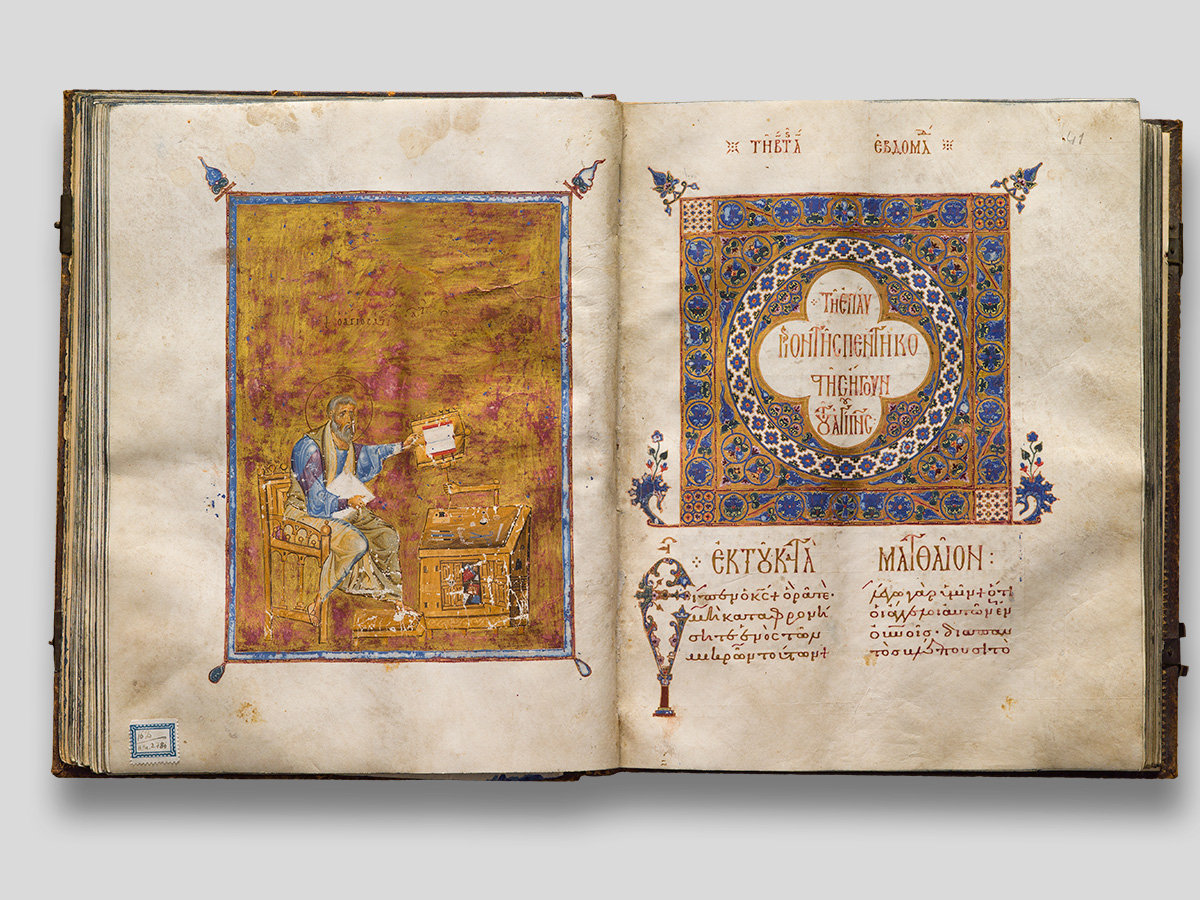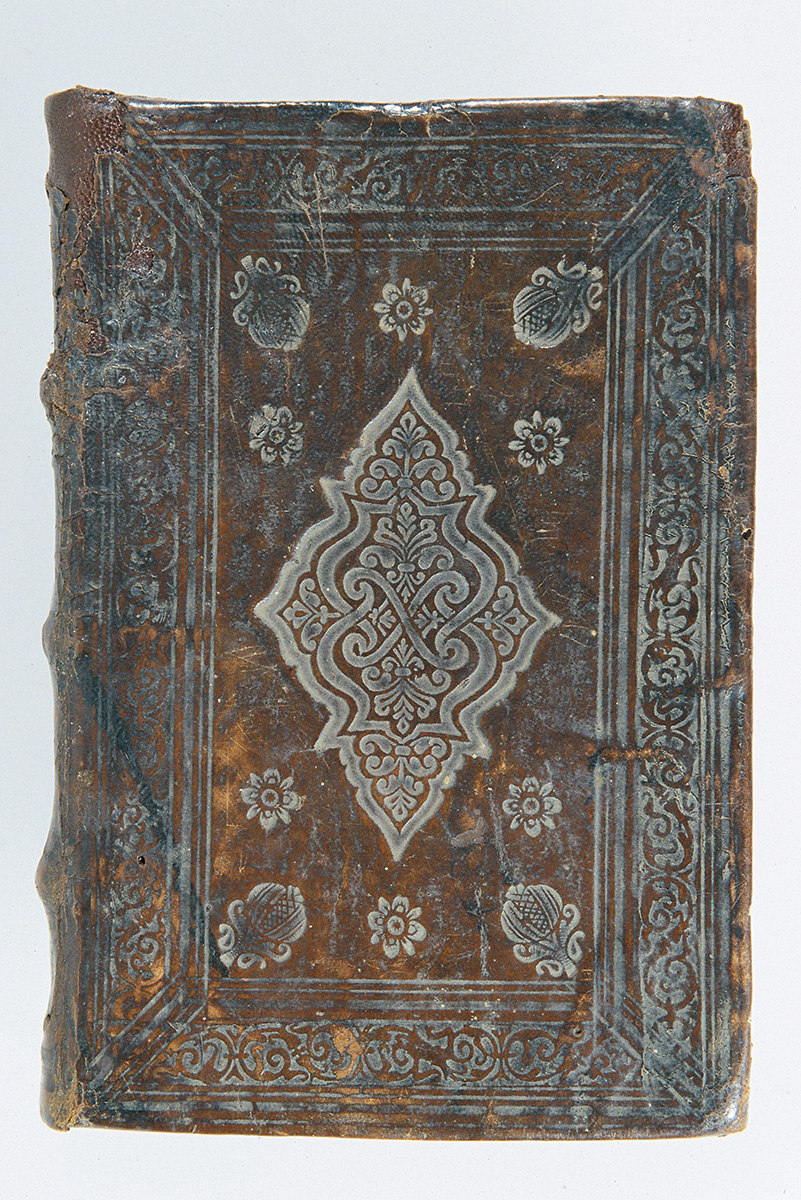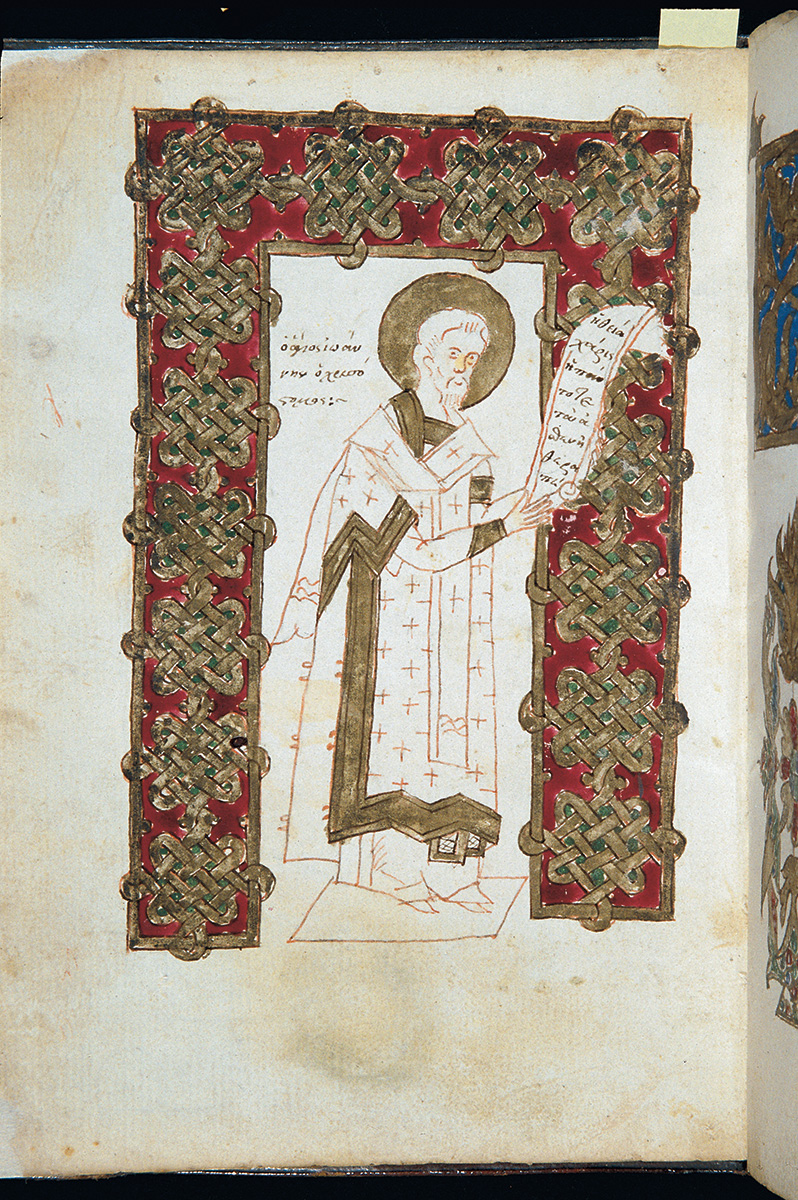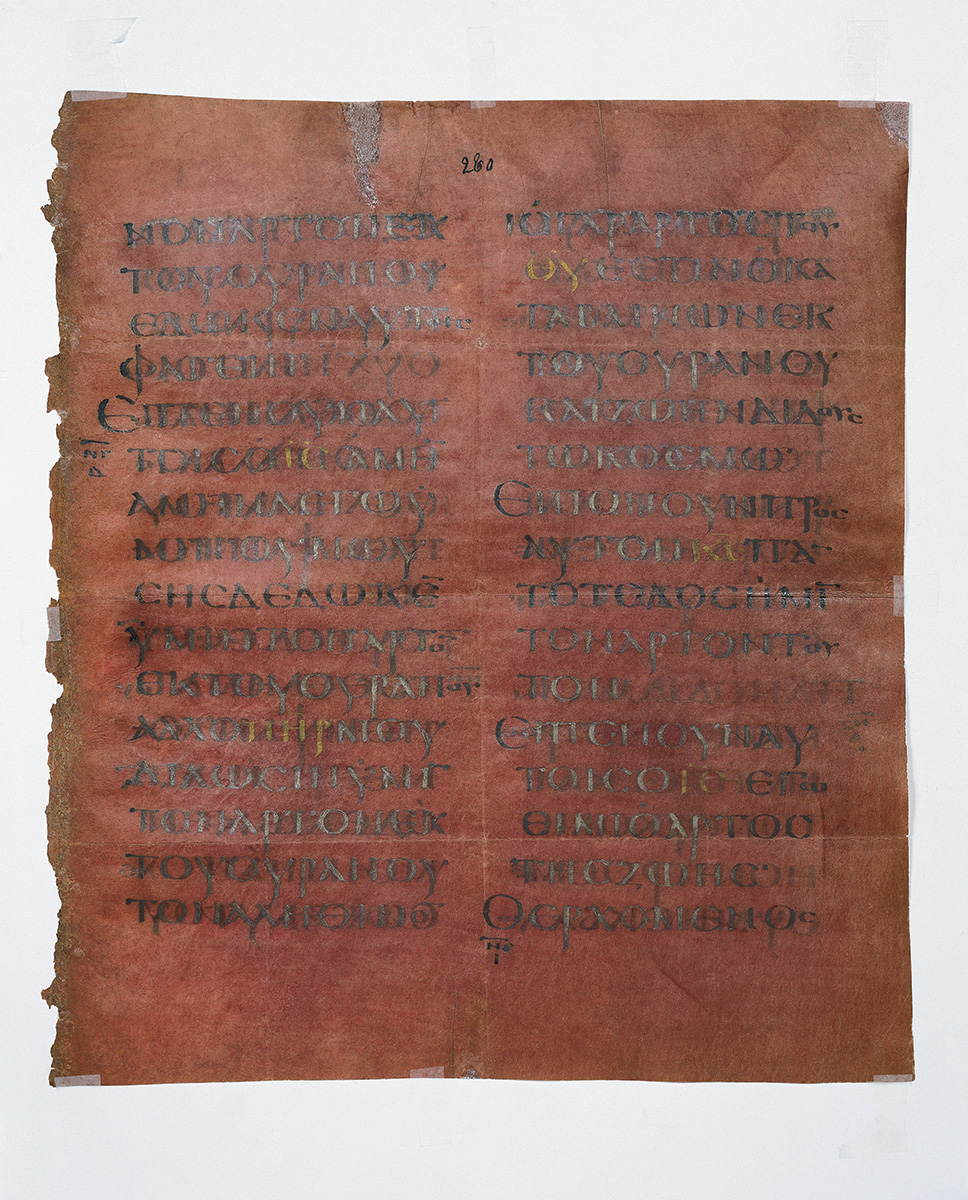
Tetraevangelio (Four Gospels)
The four-gospel codex contains excerpts that are read on Sundays, Saturdays and weekdays in the church. It consists of 325 parchment leaves and is truncated. The text is developed in two columns, with notation, written in an upright, rounded, meticulous minuscule script that echoes the style of the second half of the 11th and early 12th century. The four-gospel codex belonged to the church of Saint Athanassios of Thessaloniki. According to a note, it was preserved and bound by devout believers on July 26th 1886. Probably written in Constantinople, the codex is among the most densely decorated Byzantine four-gospel codices. It is illustrated with full-page portraits of the evangelists Matthew, Mark and Luke in the type of the Christian scribe and philosopher on a throne. The sheet with the depiction of John was detached.
Code
ΒΧφ 20
Type
Parchment codex
Chronology
late 11th-early 12th c.
Dimensions
Height 32.3 cm; width 25.2 cm
Material of Construction
Parchment
Origin
Thessaloniki, Saint Athanassios church






